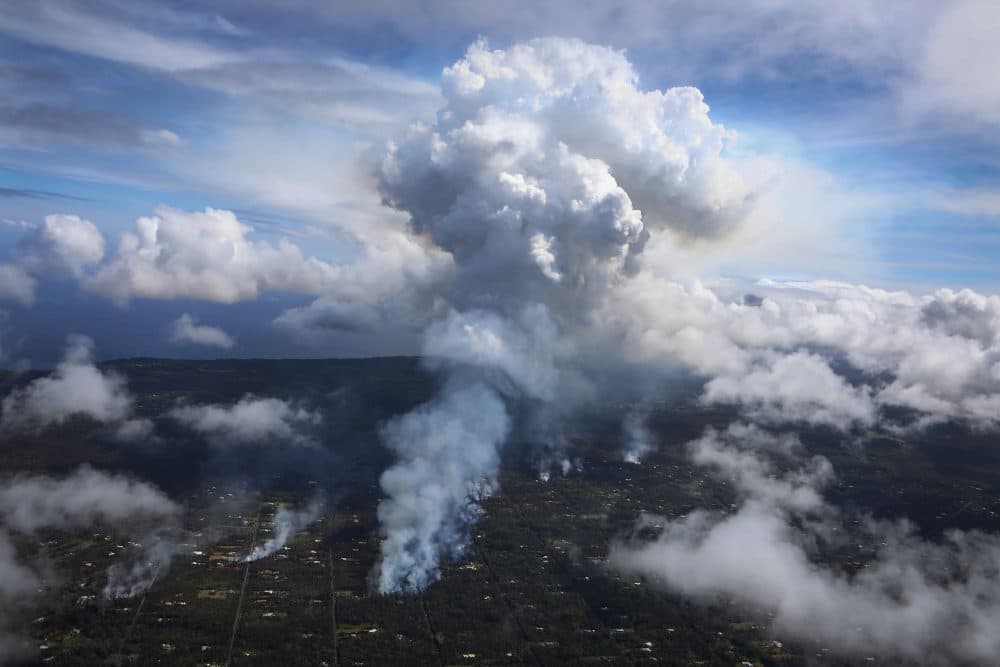Advertisement
How Long Could Hawaii's Volcano Destruction Go On?
Resume
More than two dozen homes have been destroyed in Hawaii since Kilauea volcano's latest eruption began Thursday. The ground has split open, spewing dangerous levels of sulfur dioxide and molten rock.
For a look at the science, Here & Now's Jeremy Hobson speaks with Einat Lev (@einatlev), volcanologist and assistant research professor at the Lamont-Doherty Earth Observatory at Columbia University.
This segment aired on May 7, 2018.